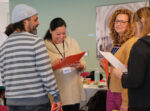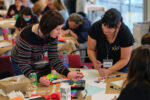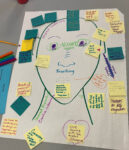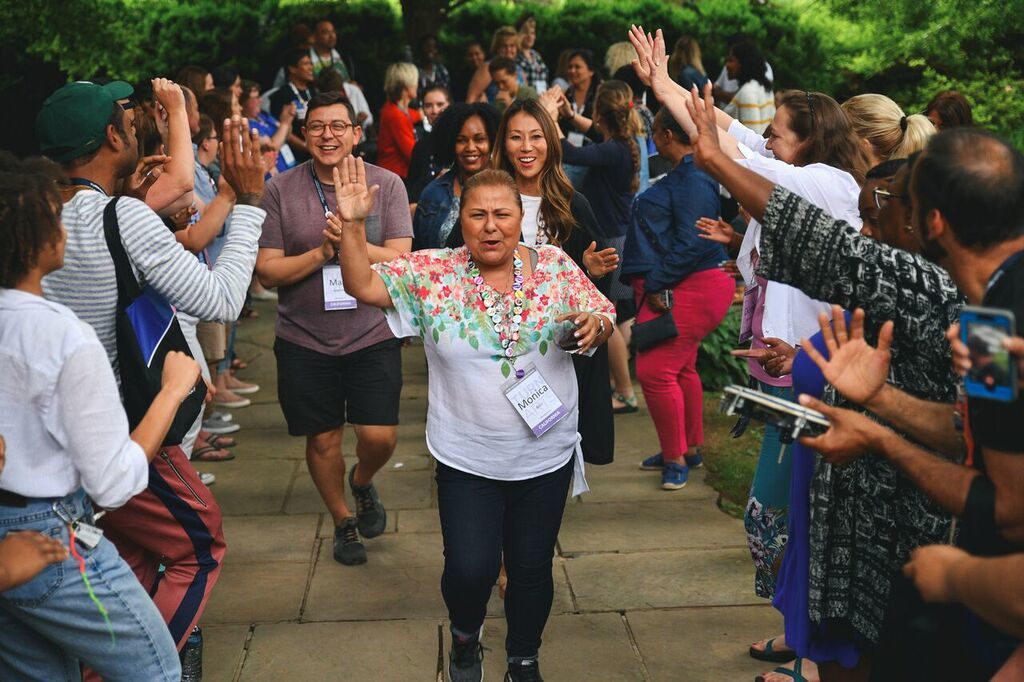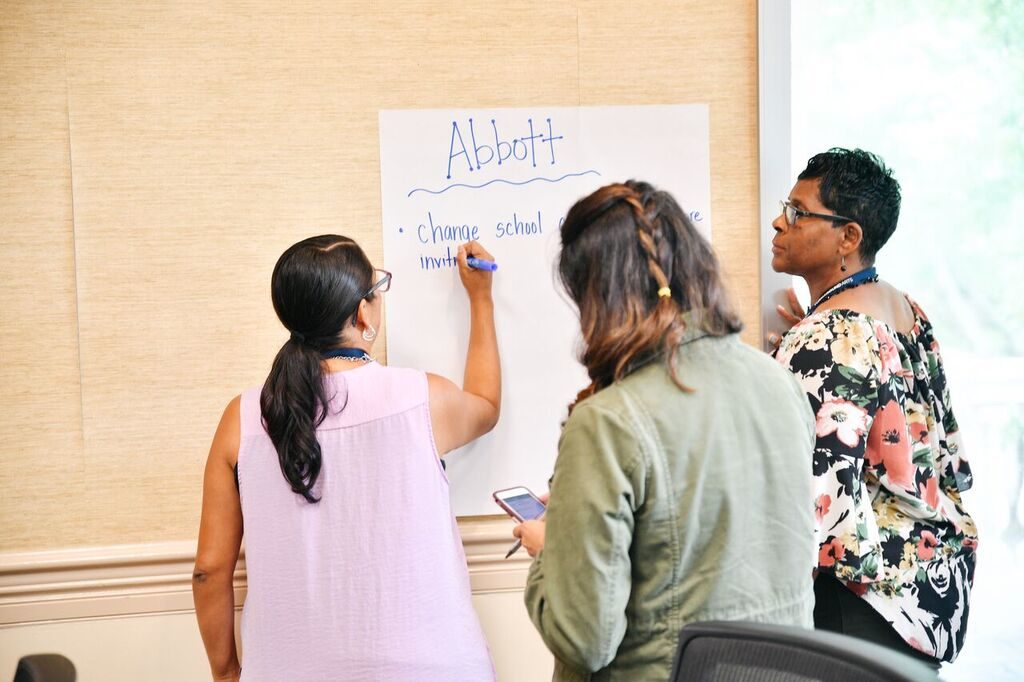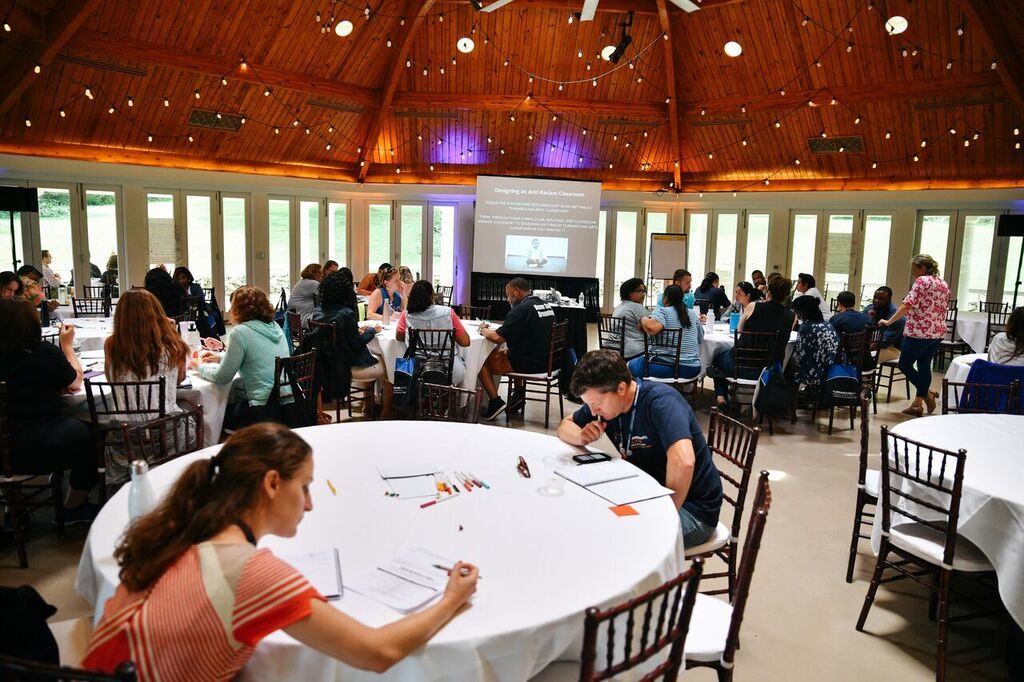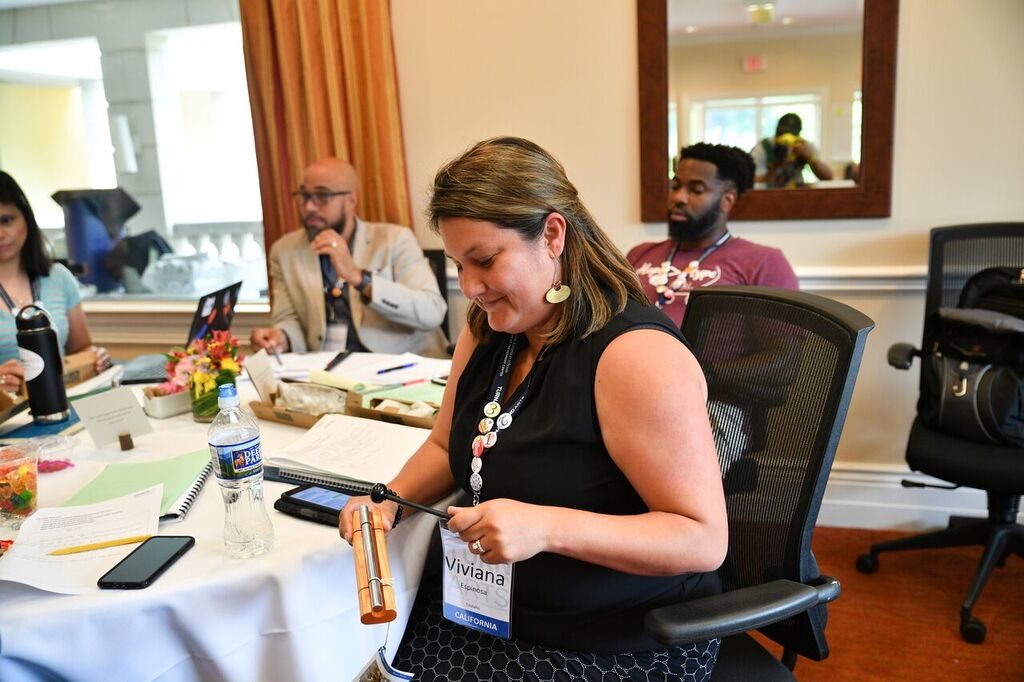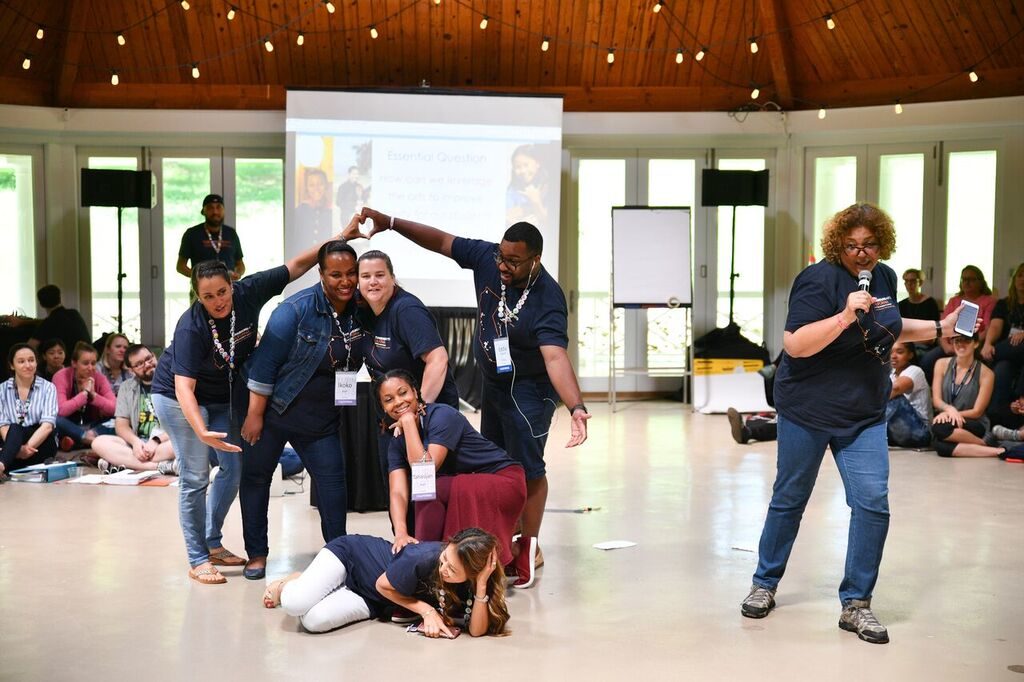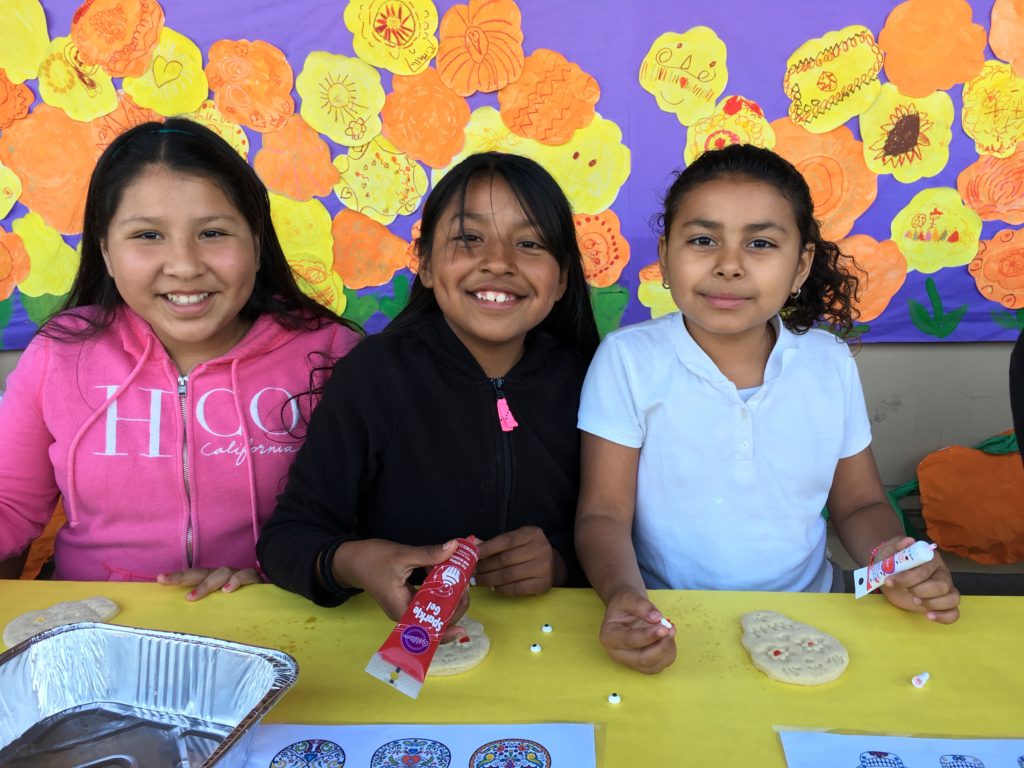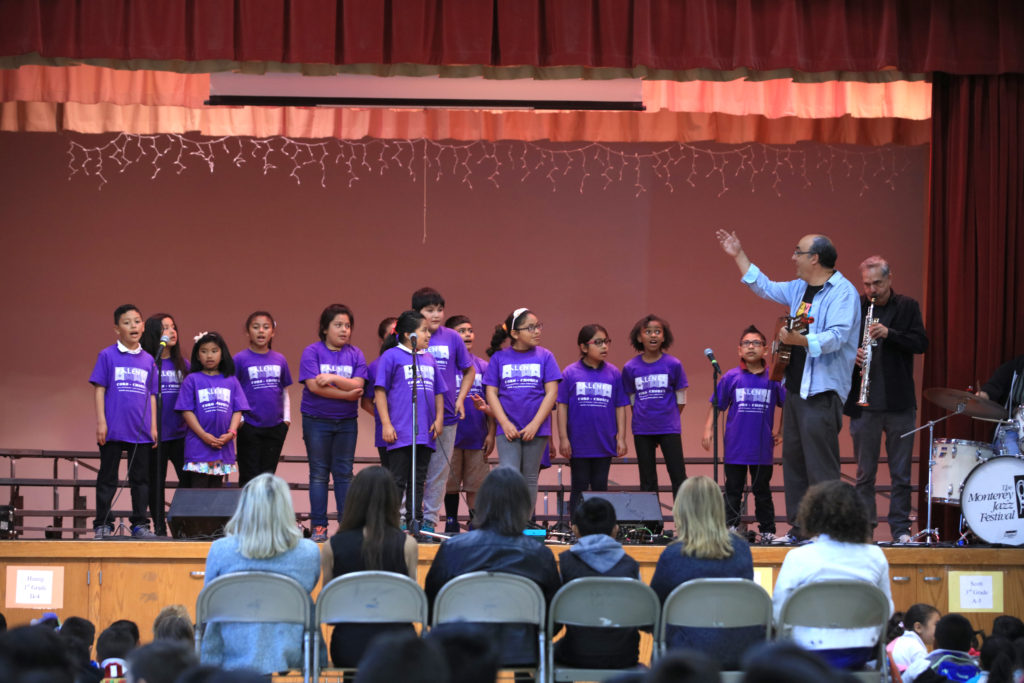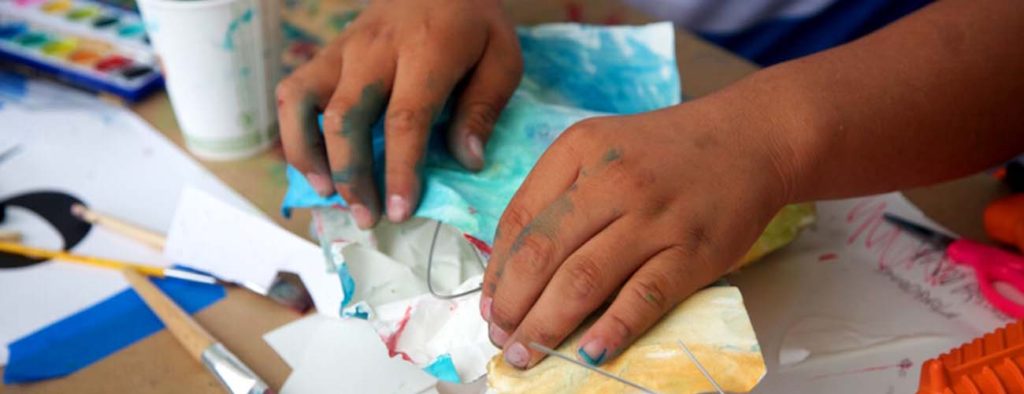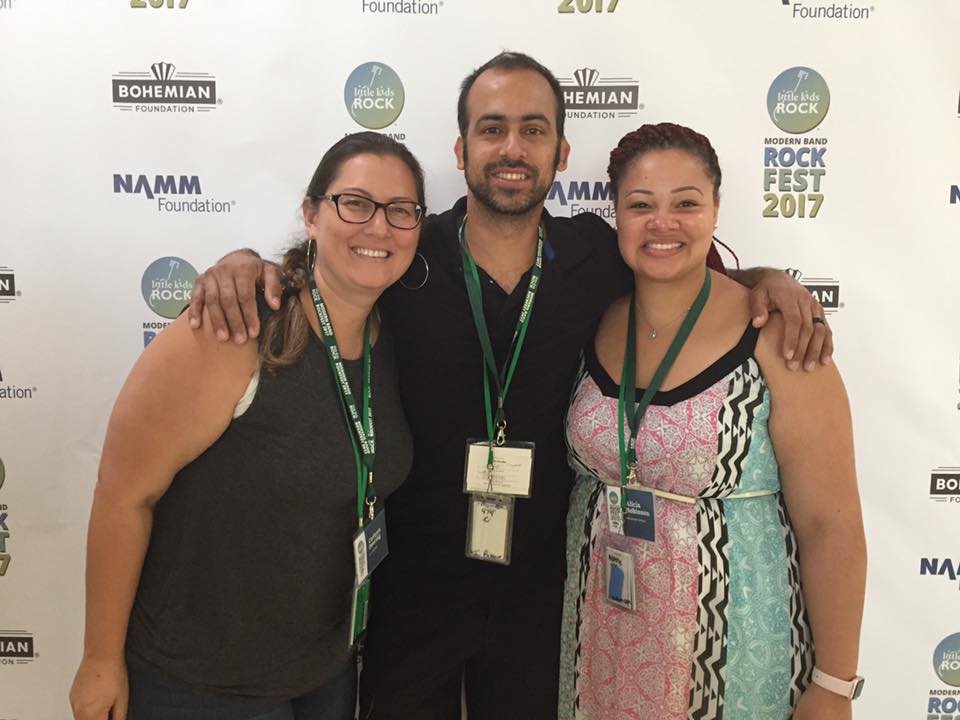
We are proud to share our recently completed Community Arts Project at Turnaround Arts: California’s longtime partner school, Hoopa Valley Elementary!
Hoopa Valley Elementary is located in Humboldt County in Northern California. Students are 90% Indigenous Americans and members of the Hupa, Yurok, and Karuk tribes.
The community has strong traditions rooted in Indigenous American cultures that they wanted to honor and celebrate through a public art project. Students worked with local artist and cultural bearer, Naishian Rainflower Richards, to create a unique art installation, that runs along the school’s fence. Entitled “Na:yk’idilyeh,” which means “necklace” in the Hupa language, the piece is inspired by the traditional necklaces created and worn by tribal members. This large-scale “necklace” showcases oversized wooden, painted replicas of the community’s invaluable dentalium used to make their necklaces.

Naishian worked with the high school woodshop students and their teacher, Mr. Johnson, to create the necklace pieces, and the elementary school students painted them in traditional patterns. Naishian shared: “This project represents our wealth in culture. Dentalium was the currency in our local tribes, and this is a reminder to those in the school that we still have this wealth.”

We send a very special thank you to Ms. Stephanie Silvia, Arts Integration Teacher, who oversaw this project and has been a tireless advocate for the arts at Hoopa Valley Elementary.

 About Naishian Rainflower Richards: Naishian Rainflower Richards is a member of the Western Shoshone tribe and a descendant of the Northern California tribes of the Hupa, Yurok, and Redwood Creek. She shares indigenous arts in the Hoopa community, previously serving as a Cultural Consultant for the Indian Education Program at Hoopa Valley Elementary. Naishian has also served as a youth and college mentor with Two Feathers Native American Family Services, teaching about local ceremonial grounds, food sovereignty, and revitalizing coming-of-age ceremonies. Through this work, she has come to understand the gap in access to these teachings. She shares that she is proud to see “students creating our local history and learning how to stand tall in this world.”
About Naishian Rainflower Richards: Naishian Rainflower Richards is a member of the Western Shoshone tribe and a descendant of the Northern California tribes of the Hupa, Yurok, and Redwood Creek. She shares indigenous arts in the Hoopa community, previously serving as a Cultural Consultant for the Indian Education Program at Hoopa Valley Elementary. Naishian has also served as a youth and college mentor with Two Feathers Native American Family Services, teaching about local ceremonial grounds, food sovereignty, and revitalizing coming-of-age ceremonies. Through this work, she has come to understand the gap in access to these teachings. She shares that she is proud to see “students creating our local history and learning how to stand tall in this world.”
As highlighted in this NPR report, the arts have been a powerful tool to build safety and self-expression for young people amid an unprecedented mental health crisis. Turnaround Arts: California launched our Community Arts Project initiative in 2021 to support arts projects like the one at Hoopa, to create space for healing and connection since schools have returned to in-person instruction. We’ve been pairing local artists with teachers, students, and families to design and implement unique art installations on their school campuses ever since.


